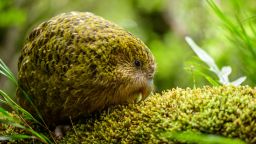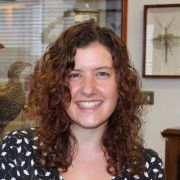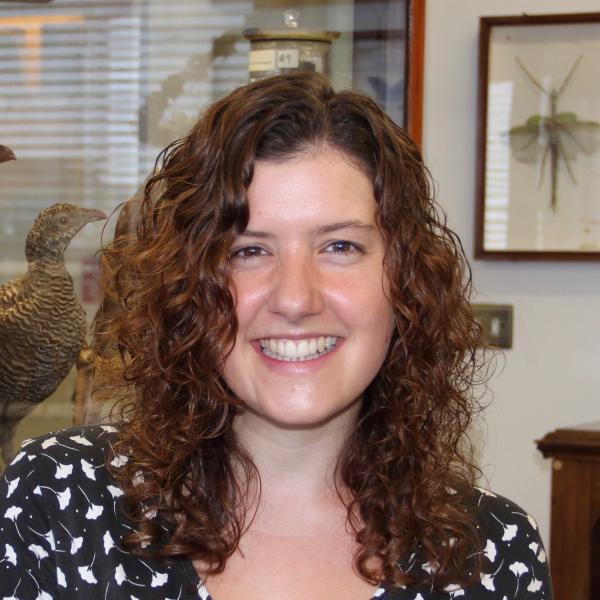Curlew recovery in the UK
The Eurasian Curlew is a ground nesting wading bird once common across the UK. England alone was once home to some 30,000 breeding pairs, however, their numbers have been in decline since the 1970s and in the last 20 years the population has more than halved. Euasian Curlews are now Red-listed as an endangered species in the UK and it is estimated they could die out in a matter of years if the number of breeding pairs does not rapidly increase.
As ground nesting birds, one of the biggest challenges curlews face is nest predation. Terrestrial predators are capable of destroying multiple nests within a short space of time and the proximity of curlew habitats to humans is exacerbating this problem. Urban expansion is effectively bringing predators like foxes closer and closer to curlew nesting sites.
Although measures can be taken to protect Curlews from external threats like predation, other factors impacting their recovery are also at play. Hatching failure in threatened bird species presents a major barrier for population growth and species recovery, which is why studying the causes of egg failure is so important.
Understanding eggshells
Luckily, this is an area of research that Dr Nicola Hemmings is well versed in. For the last three years she has been working with the Royal Society for the Protection of Birds (RSPB) and the Wildfowl and Wetlands Trust (WWT) on ‘Project Godwit’, which focuses on the recovery of another bird called the Black-Tailed Godwit.
Project Godwit was initiated in 2017 with the aims of tackling Black-Tailed Godwit decline in the UK and raising awareness of what can be done to help threatened wading species.
More than 80% of Black-Tailed Godwits in the UK breed at just two locations, the Ouse washes and the Nene washes. Thanks to the efforts of Project Godwit, populations in both of these locations have increased from 38 pairs in 2017 to 53 pairs in 2021, an increase of 39 percent.
Nicola’s involvement with Project Godwit saw her studying the eggshells of these birds to see why they were failing to hatch. Nicola said: “What we found in the godwit is that embryos are more likely to die at a late stage of development if the eggshell is thin. We think this is because thin shelled eggs tend to lose water too quickly, leading to the egg drying out and the embryo dying.”
Many of the people involved with Project Godwit also have links with the Curlew Recovery Partnership, so last year they contacted Nicola to see if she could help them find out why curlew eggs were also failing to hatch.
Of a small sample of 12 curlew eggs collected last year, half had thin, crumbly shells and had failed at a late stage of embryo development.
“This really matched with what we’d seen in the Black-Tailed Godwit,” Nicola said.
Based on the results of Project Godwit, Nicola’s team think that a similar issue may be occurring in the curlew eggs. But 12 eggs is a very small sample size: more tests need to be done to determine whether these problems are widespread among the curlew population.
This has led to Nicola and her team joining forces with the Curlew Recovery Partnership in a bid to get more curlew eggshell samples from across the UK. Together, they have asked conservation groups to send in samples from successful and failed curlew eggs for analysis at Nicola’s lab in the School of Biosciences at the University of Sheffield. Already, Nicola and her team have received over 100 samples from over 25 locations across the UK.
Nicola and her team will use micro CT scans to examine the structure of the eggshells they recieve. Mass spectrophotometry will also allow them to analyse the composition of the shell. Receiving fragments from successfully hatched eggs will also mean the team can compare these to those of unhatched eggs to see if there are any differences between the two.
“What we want to do first of all is ask: is this a real problem? We want a big sample that is geographically widespread across the UK so we can see if eggshell thinning is a common issue. If it is, then we want to try and identify what is driving the problem.”
The elusive problem
If Nicola and her team do indeed find that curlew eggs are more fragile than they should be, the next question to answer is why? Identifying the underlying problems causing the curlew eggs to crumble will be no easy task, but Nicola has a few ideas of where to start.
One theory is that UK curlew populations are being affected by environmental contaminants This is something that Nicola and her team will look for in the eggshells that they receive.
A lack of adequate nutrition could also lead to thin-shelled eggs. To investigate this, Nicola’s lab will use a technique called stable isotope analysis to get an idea of the curlew’s dietary proportions, allowing them to see whether poor nutrition is leading to the production of weak eggs.
“I think it's hard to get your head round how big an issue environmental contaminants are.” Nicola said. “But if we are able to hone in on a particular contaminant that is causing a problem, then obviously we can see a route to try and tackle that issue. It's the same with diet, if we find that there's some sort of dietary deficiency, then the conservation teams may be able to intervene to help with that.”
Although any discovery that external factors such as diet and pollution were affecting the curlew eggs would expose significant challenges, the route to tackling these problems would become clearer and progress towards solutions could be made more rapidly. However, there are a range of intrinsic factors that could just as easily be the culprit of these fragile eggs.
For example, when they first contacted Nicola, the Curlew Recovery Partnership were worried that there could be fertility issues in the UK breeding population because they might be ageing. It currently takes an average of four breeding pairs to produce a single chick each year, so the current breeding population is not producing enough chicks to replace themselves. As birds age, their fertility can reduce which, overall, could be bad news for curlew recovery.
Thankfully, from what Nicola has seen so far, she doesn't think there are any fertility issues among the population. All the eggs they have looked at have been fertilised, even if they show no sign of embryo development. However, this doesn't mean that age isn’t a factor affecting the fragile eggshells.
“There's been a lot of research into chickens, because of their economic value, which shows that as female birds age they experience a reduction in egg and eggshell quality,” Nicola said. “A similar thing could be at play with the curlew population if we do find a link with maternal age or condition.”
Finally, it could be hatching failure is linked to the population decline experienced by curlews in the UK. A smaller population may make it harder for the remaining breeding individuals to find a mate, putting the population at a higher risk of inbreeding and resulting in a genetic bottleneck. This means that as more related birds breed together to produce offspring, the genetic diversity of that offspring is reduced.
“Inbreeding is known already to lead to problems like elevated early embryo morality because you get expression of harmful genes in early development that can lead to death,” Nicola said.
“If the problem with the eggshells is real and caused by something more intrinsic, like ageing or inbreeding, then it's still resolvable but there's more uncertainty about how to tackle it. It’s a longer game. We’d need to work to increase the population size, but also think about how to maximise genetic diversity within the population.”
Hope in the form of a kakapo
Although fixing these intrinsic problems to aid species recovery can be lengthy and is never straightforward, Nicola already has previous experience of doing just that.
Far away from the British wetlands lives another bird called the kakapo. Kakapos are endemic to New Zealand and although they once thrived in great numbers, the arrival of humans to their islands has had disastrous consequences for their populations.
A type of flightless parrot, kakapos have vibrant green feathers and can weigh between four and nine pounds, also making them the world's heaviest parrot. Living to around 70-to-90 years, they may well also be one of the oldest living birds in the world
By the mid-1990s, there were only about 50 individuals left in the world, however, through the immense efforts of the kakapo recovery team, part of the New Zealand Department of Conservation, their numbers have now increased to around 197 adults at present. Although kakapos are still incredibly endangered, the increase gives hope that recovery of the species is possible.
Unfortunately, kakapo eggs have a very high rate of hatching failure, with around 60% failing to hatch and of these, the majority show no signs of embryo development. This led the kakapo recovery team to fear that the kakapo population was struggling with fertility issues, and they called upon Nicola to help them figure it out.
Nicola worked with the recovery team across the 2018-19 breeding season to find out for sure whether the eggs produced were actually fertilised or not. Surprisingly, Nicola’s lab found that the majority of kakapo eggs were fertilised, but that the embryo within had died at a very early stage of development.
Knowing this, the kakapo recovery team could focus their efforts on figuring out the cause of these early embryo deaths, and they think the main culprit may be the high genetic relatedness between breeding males and females.
“All of the individuals today came from just a few founders, they are all related,” Nicola said “As the population grows and expands the problems related to genetic similarities will become fewer, and that's what we are now trying to work on at the moment.”
Thanks to Nicola’s input, the kakapo recovery team has been able to concentrate their efforts on the actual problem at hand. By identifying which breeding pairs can produce successful eggs together, they can translocate these individuals to different islands with the hope that they may set out founder populations there.
If similar problems transpire to be affecting curlew populations in the UK, the story of the kakapos can provide a hopeful case study to help guide conservation efforts.
Looking to the future
Curlew populations in the UK face an uncertain future, but Nicola remains positive. Her research, combined with the efforts for the Curlew Recovery Programme, will be vital to ensure the success of future curlew generations.
“People are so invested in this,” Nicola said. “It's so rewarding to see how much people care about birds and nature. You can sometimes feel a bit gloomy about the prospects for the environment because of climate change and biodiversity loss.
“But it gives me a bit more hope seeing so many people pulling together and trying to do something to fix the problems that we're looking at. As long as enough people care, there’s still a chance.”
Written by Louise Elliott







